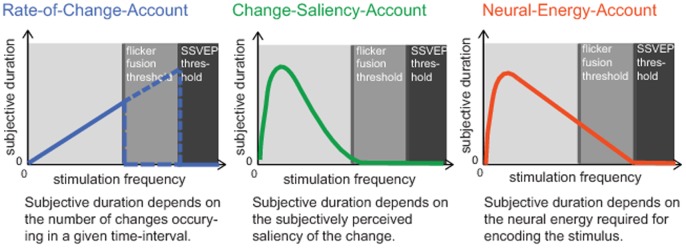Figure 1. Three accounts describing the influence of objective flicker frequency, subjective flicker perception, and the neural response to flicker on subjective duration.

We measured participants' flicker fusion threshold (the highest frequency perceived as flicker) and their SSVEP threshold (the highest frequency still evoking a significant frequency-specific SSVEP), and tested predictions from three accounts regarding how subjective duration is affected by flicker frequencies below, between and above these two thresholds. Left panel: The rate-of-change-account predicts that subjective duration increases monotonically with the objective rate of change (the flicker frequency) up to the flicker fusion threshold or the SSVEP threshold. Middle panel: The change-saliency account predicts that the effect of flicker frequency on perceived duration is maximal when the flicker is subjectively perceived as most salient. This should result in an inverted u-shaped relationship between flicker frequency and perceived duration, with a maximal effect at frequencies between 8–15 Hz. Invisible flicker (faster than the flicker fusion threshold) should not affect subjective duration, even if it evokes a frequency-specific neural response. Right panel: The neural-energy-account predicts that subjective duration depends on the neural energy expended in processing a stimulus. Hence, subjective duration should be longest for frequencies that evoke the largest neural responses (typically at 12–15 Hz). Note that in contrast to the change-saliency account, frequencies above the flicker-fusion threshold that still evoke a neural response should affect perceived duration.
